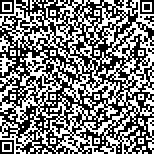申沧海,徐宝山,杨强,张晓光,李晓峰,李奇,马信龙.MRI T2加权像与扩散张量成像量化指标对脊髓型颈椎病术后脊髓功能恢复的预测价值[J].中华物理医学与康复杂志,2017,39(7):492-497
扫码阅读全文

|
| MRI T2加权像与扩散张量成像量化指标对脊髓型颈椎病术后脊髓功能恢复的预测价值 |
| Using T2 weighted magnetic resonance imaging and diffusion tensor imaging to predict functional outcomes for patients with cervical spondylotic myelopathy |
| |
| DOI: |
| 中文关键词: 磁共振成像,弥散 颈椎 脊髓压迫症 预后 |
| 英文关键词: T2 weighted magnetic resonance imaging Diffusion tensor imaging Cervical vertebrae Spinal cord compression Prognosis |
| 基金项目:国家自然科学基金(81272046);国家自然科学基金(31670983) |
|
| 摘要点击次数: 6149 |
| 全文下载次数: 6993 |
| 中文摘要: |
| 目的 探讨MRI T2加权像(T2WI)量化指标与扩散张量成像(DTI)量化参数对脊髓型颈椎病(CSM)患者术后脊髓功能恢复的预测价值。 方法 收集2014年4月至2016年4月期间在天津医院术前行MRI及DTI检查并完成术后随访的140例CSM患者资料,所有患者术后均行系统康复治疗。采用日本骨科学会评分系统(JOA)评估患者脊髓神经功能恢复情况。根据术后1年随访时JOA评分改善率将上述患者分为恢复良好组(其JOA评分改善率≥50%)和恢复不良组(其JOA评分改善率<50%)。比较2组患者MRI T2WI量化指标[包括脊髓受压百分比(MSCC)、脊髓信号强度比值(SCR)和脊髓横截面积(TA)]和DTI量化参数[包括脊髓表观弥散系数(ADC)和各向异性分数(FA)],并绘制受试者工作特征曲线(ROC),评价MRI T2WI与DTI各量化指标对CSM术后脊髓功能恢复不良的预测价值。将单因素分析中有统计学差异的临床与影像学指标行多因素Logistic回归分析,确定CSM恢复不良的独立危险因素。 结果 MSCC、SCR、TA、ADC及FA预测CSM术后脊髓功能恢复不良的曲线下面积(AUC)分别为0.593、0.682、0.706、0.719和0.749,其预测界值分别为44.85%、1.561、0.46cm2、1.339×10-3mm2/s和0.386。DTI各量化参数的AUC均大于T2WI量化指标。MSCC与SCR的预测价值较低(其AUC均小于0.7);TA、ADC和FA具有中等预测价值(其AUC 0.7~0.9)。多因素Logistic回归分析显示,低JOA评分、TA≤0.46cm2和FA≤0.386均为CSM术后恢复不良的独立危险因素(P<0.05),并据此建立预测模型;该模型预测CSM术后预后不良的AUC(0.871)明显高于JOA评分的AUC(0.760),其间差异具有统计学意义(P<0.05)。该模型以0.360为预测界值,敏感度为80.39%,特异度为77.53%。 结论 将JOA评分、MRI T2WI与DTI量化指标相结合,可更准确地预测CSM术后脊髓功能恢复情况,同时也为术后康复方案制订提供参考。 |
| 英文摘要: |
| Objective To explore the value of quantitative T2 weighted magnetic resonance imaging (T2WI) and diffusion tensor imaging (DTI) parameters for predicting functional outcomes after surgery for cervical spondylotic myelopathy (CSM). Methods One hundred and forty CSM patients received T2WI and DTI before surgery at Tianjin Hospital between April 2014 and April 2016. They were then given systematic rehabilitation treatment after the surgery. The Japanese Orthopaedics Association (JOA) scoring system was applied to evaluate their neurological function before and after the surgery. According to the JOA recovery rate at 1-year follow-up, the patients were divided into a good recovery group (recovery rate≥50%) and a poor recovery group (recovery rate <50%). Maximum spinal cord compression (MSCC), signal change ratio (SCR), transverse area (TA), apparent diffusion coefficient (ADC) and fractional anisotropy (FA) were compared between the two groups. Receiver operating characteristics (ROC) curves were used to measure the prognostic ability and determine the best cut-off value for each variable. The independent predictors of a poor recovery were estimated using univariate and multivariate analysis. Results ROC analysis showed that the area under the ROC curve (AUC) of MSCC was 0.593. For SCR it was 0.682. For the TA it was 0.706. For the ADC it was 0.719 and for FA it was 0.749. The respective cut-off values were 44% compression, 1.561, 0.46 cm2, 1.339×10-3 mm2/s and 0.386. FA had the largest AUC, followed by ADC, TA, SCR and MSCC. MSCC and SCR had low discrimination power (AUC<0.7) in predicting a poor recovery, whereas TA, ADC and FA had moderate discrimination power (AUC 0.7-0.9). Logistic multivariate regression showed that a low JOA score, TA≤0.46 cm2 or FA≤0.386 were independent risk factors for a poor recovery. A predicting model built according to the results of the logistic regression analysis gave an AUC of 0.87, significantly better than that of the JOA score. With a cut-off value of 0.36, the sensitivity and specificity were 80% and 77% respectively. Conclusions Combining T2WI and DTI parameters with the JOA score may better predict the recovery of patients with CSM. The values can also provide references for making up rehabilitation plans. |
|
查看全文
查看/发表评论 下载PDF阅读器 |
| 关闭 |